I arrived in Rome from Geneva on Wednesday, April 30th, 2014. I landed pretty early in the morning and hopped the Leonardo Express train to the hostel (Freedom Traveller Hostel at Via Gaeta 23). The hostel was old and did not have the greatest facilities, but I was able to book a small room and the hostel was about a 5 minute walk from the Termini Train Station.
Wednesday, April 30th, 2014: Day One in Rome
I went to the hostel, dropped my things off, then went back to the train station to buy a ticket for the hop-on, hop-off double-decker buses to see the city. I was still tired so I figured that the bus would be a fast way to see the whole city and get to and from the major attractions. There are also audio guides that you can listen to with headphones while on the bus so you can learn about some of the sites while riding. I happened to take the Ciao Roma bus company, but there are a lot of different companies that all go to the same places, so I don't think it matters so much which bus you take. The customer service for Ciao Roma was kind of hit and miss, too.
 |
| Ciao Roma bus route |
I decided to first take a ride around the city until reaching the Vatican City. I hopped off here and walked up Via della Conciliazione until I reached Piazza Pio XII, just outside the Vatican City. I don't know if I have ever been to a place with so many people packed together. It just so happened that at the time I wanted to go inside the Basilica San Pietro (St. Peter's Basilica), the Pope was doing an audiencia. An audiencia is where the Pope is in the main square in front of the Basilica and addresses the people and they can last anywhere from ten minutes to a couple hours, depending on what the Pope has to say and how many people he will personally address.
The Vatican City and Rome police forces who were trying to manage the crowd flows were not letting more people inside the Vatican City until the Pope finished the audiencia. It was hot that day though and there were over a thousand people crammed against the gates waiting for a couple hours to get past the barrier from Rome into the Vatican. I thought it was strange that they police kept telling us that we could not enter the plaza because we had to wait for people to leave, but as people left, more people were not allowed to enter. Finally, we watched the Pope hop into the Pope-mobile and drive off, ending the audiencia. The Rome police finally got the signal from the Vatican police to let people in past the barriers and when they unblocked the gate, there was this huge mob of people that all started running to be the first to enter the Basilica. It was pretty insane. The mob clustered in the plaza, forming a "line." When I saw that it would be at least another hour or so of just standing in the plaza on a really hot day without any water, I decided to leave and try to use the rest of my day to see something else.
I thought that since the Vatican Museums were nearby, that I would give them a try. However, the line for this too was insanely long - it stretched around for about three blocks before even getting to the entrance (on Saturday morning, right before my flight, I would finally make it inside the Vatican Museums and Sistine Chapel). Once I saw that the line was so long, I decided to leave the Vatican area altogether and do something different. First stop: gelato.
After the gelato break, I decided that I would just hop back onto the Ciao Roma bus and ride around the entire city at least once to see it and get my bearings for when I'll walk around for the next couple days. Since many people exit at the Vatican City and Colosseum stops, I thought I was in a good location to hop back on and get a good seat on the upper deck. I was right, and managed to find a good place. I listened to some of the new audio and got off the bus once we arrived at Termini. I was pretty tired from the early morning start, so I went back to the hostel, officially checked in, then took about an hour nap.
That afternoon, I got back on the bus and rode to Fontana del Tritone, a fountain by Gian Lorenzo Bernini. Bernini's fountain, located in Piazza Barberini, has four dolphins with upturned tails that support an open scallop shell where Triton sits, blowing into a conch shell. The fountain was designed by Bernini in 1643 and was his first of many fountains he made. Up until the end of the 1700s, apparently the bodies of unidentified people were laid out in front of the fountain and the town crier would call the public to come to identify and claim the bodies. Weird. Luckily, there are no dead bodies in front of the fountain any more and it can be enjoyed sans zombies. Actually, the Fontana del Tritone is my favorite fountain because of its design and how great it looks at night, although the fountains in Piazza Navona are pretty cool too.
From Fontana del Tritone, I walked down Via del Tritone to the famous Fontana di Trevi. The Fontana di Trevi has a magical quality to it, captured by Frederico Fellini in La Dolce Vita (although I don't image that it would ever be as empty or as clean as it appears in this scene).
The fountain was designed to be a celebration of Acqua Vergine, the water conveyed to Rome by an aqueduct constructed by Agrippa in 19 BC. The fountain itself has been remodeled and replaced throughout the centuries. The fountain is so large that it seems to fill the entire plaza/piazza and you can hear the thundering of the water from about a block or so away, despite the crowds of people.
Here at Fontana di Trevi, legend has it that if you stand with your back to the fountain and throw a coin over your shoulder into the water, you will return to Rome someday. Apparently, the city gets some good use out of this tradition.
Apparently, there are so many tourists that visit the Trevi fountain that a charity for the poor and needy in Rome called Caritas began collecting the coins from the fountain each day. The daily amount is about 3,000 Euros (or about $4,109 USD). Recently, Caritas opened a supermarket to distribute essential items at free or low costs for those in need.
After making a wish and throwing my coin into the fountain like so many others before, I wandered around the streets nearby the piazza and grabbed a caprese sandwich and bottle of water to go. I walked back to the fountain and found a place to sit along the fountain's left side where I could watch the crowds of people in the plaza as well as appreciate the fountain's beauty and rushing water from up close. Sitting on a high part of the fountain, I ate my dinner and watched the sun set and the lights slowly turn on, one by one, to illuminate the little piazza and make the fountain come to life.
Making my way back to Fontana del Tritone, I realized that I had waited until after the bus' last time to take me to the Termini stop. I had the hostel's business card with me and there were tons of taxis around the piazza, so I was in no rush. I crossed the busy streets back to the piazza to admire Tritone at night before catching a cab back to the hostel.
Thursday, May 1st, 2014: Day Two in Rome
Since I had been up so early the day before, I decided that I could afford to sleep in a bit today. The weather forecast predicted a beautiful day, so I decided I would try to go to the Colosseum. Unfortunately, I did not realize that May 1st was a national holiday in Italy, so everything was closed. The only tourist attractions that were open were those that were outside (like the fountains and piazzas) and things associated with churches.
I still decided to walk around the Colosseum and take some great pictures of it and the Palatino today to take advantage of the beautiful weather. I continued walking along Via di San Gregorio until I arrived at Circo Massimo (Circus Maximus, in English/Latin), the old chariot racing grounds of the emperors.
Apparently, this is what it looked like in its glory years, after being built around 530 BCE. It must have been pretty incredible to see something like this constructed and then to be there in the stands watching the thundering chariots fly by (or better yet, in the chariot itself!).
There are not a whole lot of ruins left of Circo Massimo and today, the racing grounds now serve as a public park. I decided to take a break and enjoy the sun, so I walked to the center of the old racing grounds and laid down in the grass.
After lounging in the early afternoon sun on the grounds of Circo Massimo, I headed over to the Sant'Maria in Cosmedin church, famous for the Bocca della Verita, the Mouth of Truth. Legend has it that if you place your hand in the mouth while telling a lie, your hand would be bitten off. You can see Gregory Peck playing the old prank on Audrey Hepburn in Roman Holiday.
Just like Peck does in the movie, there was a security guard working at the Bocca della Verita who would tease some tourists by shouting AAAAH! when they cautiously place their hands in the mouth. The lips are actually pretty smooth - either chapstick for statues or the result of thousands of tourists throughout the years placing their hands in the mouth. Luckily, despite telling a little lie, I left with both hands and all ten fingers. ;)
The old theatre, Teatro Marcello, is just up the road. The theatre's architecture with its arches served as an inspiration for the design of the Flavian Amphitheatre (better known as the Colosseum) when it was built some years later.
My next stop was the Campidoglio, and the church next to it, designed by Michelangelo when he was only 25 years old. The church was gorgeous, especially with its beautiful chandeliers. The Campidoglio was also pretty cool. You climb up several stairs to reach the plaza at the top, with a huge statue of Marcus Aurelius riding a horse. Castor and Pollux (twins and brothers to Helen of Troy), each hold a horse and wait at the top of the stairs to the Campidoglio. From behind the government buildings (with a fountain of the River God Tiber in the front), you can see a statue of Romulus and Remus with the wolf, as well as a great view of the Palatino and Foro Romano.
Right next to the Campidoglio, there is a huge white marble building, the Monumento Vittorio Emanuele II. Vittorio Emanuele II became king of Italy in 1878 and was the first king of a united Italy since the 6th century. He is pretty famous in Italy and there are streets named after him in many Italian cities. The front of the white marble building has a monument for the Tomb of the Unknown Soldier, guarded around the clock by Italian soldiers. Just like at Arlington National Cemetery, this Tomb of the Unknown Soldier has a changing of the guard that occurs periodically. I did not film it, but YouTube exists, so this is pretty much what the changing of the guards looked like.
After watching the ceremony and visiting the monument, I walked over to Ristorante Il Miraggio (map), a restaurant nearby for a quick pizza lunch (pizza all'ananas).
I then began to make my way over to the Pantheon. Unfortunately, the Pantheon was also closed for the May 1st holiday and the piazza was, like everything else in Rome I was soon discovering, insanely packed with more people in one place than I've ever seen before.
As I moved from the Pantheon to Piazza Navona, I stumbled across the church of San Ignacio (San Ignazio in Italian, Saint Ignatius in English). Apparently, San Ignacio was a Basque knight and thus is one of the patron saints for the Basque people in Pais Basco in Spain. The church is incredible though. The architecture inside is actually quite simple and the ceiling is a simple, smooth arched roof. It is the awe-inspiring frescos that make the church come to life. Painted by a lay Jesuit brother, Andrea Pozzo, in the last decades of the 1600s, the frescos are so stunning that you'll never want to look back down. It seems as though the figures are in three dimensions and that the angels are falling from the ceiling down toward you. There is no picture that I could possibly take that can capture how absolutely stunning this place is, but with the beauty of its art and the fact that there were not a whole of of people inside, since it's not a major or well-known tourist destination, it is definitely one of my favorite places in Rome.
After spending a long time admiring the beauty of this hidden gem, I continued along the way until I reached Piazza Navona. The fountain in the center of Piazza Navona is also by Bernini and is called Fontana dei Quattro Fiumi, or The Fountain of Four Rivers. The statues alongside the central column represent the Danube, Ganges, Rio de la Plata, and the Nile rivers.
According to popular tales, the poses of the statues for the Nile and Rio de la Plata are also that of the statue of Saint Agnes in the church directly behind the fountain. This is said to be because of the rivalry between Bernini and Borromini. Apparently, Rio de la Plata's hand is raised to ward off the collapse of the church's facade while the Nile has its face covered in its refusal to look at Borromini's work (as opposed to the fact that the source of the Nile at this point was not yet known in Europe).
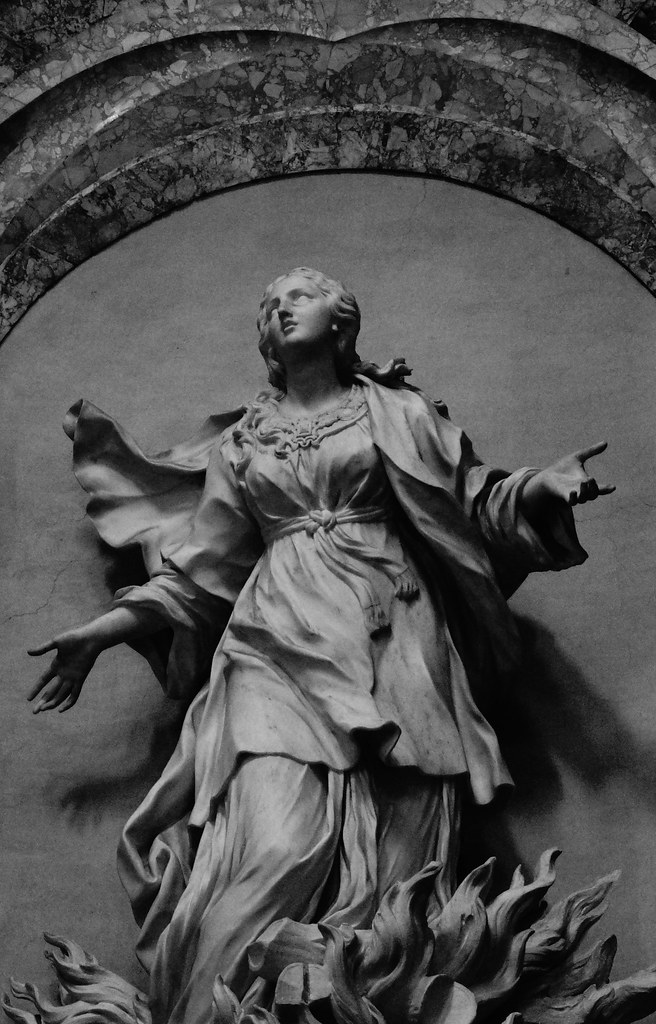
In this same vein, Saint Agnes' statue is touching her chest in a gesture by Borromini to assure the people of Rome that the church would not collapse.
The story of Saint Agnes itself though is actually pretty interesting and definitely gives you a different impression when entering the church. I ended up picking up a brochure from the church that explains it in detail.
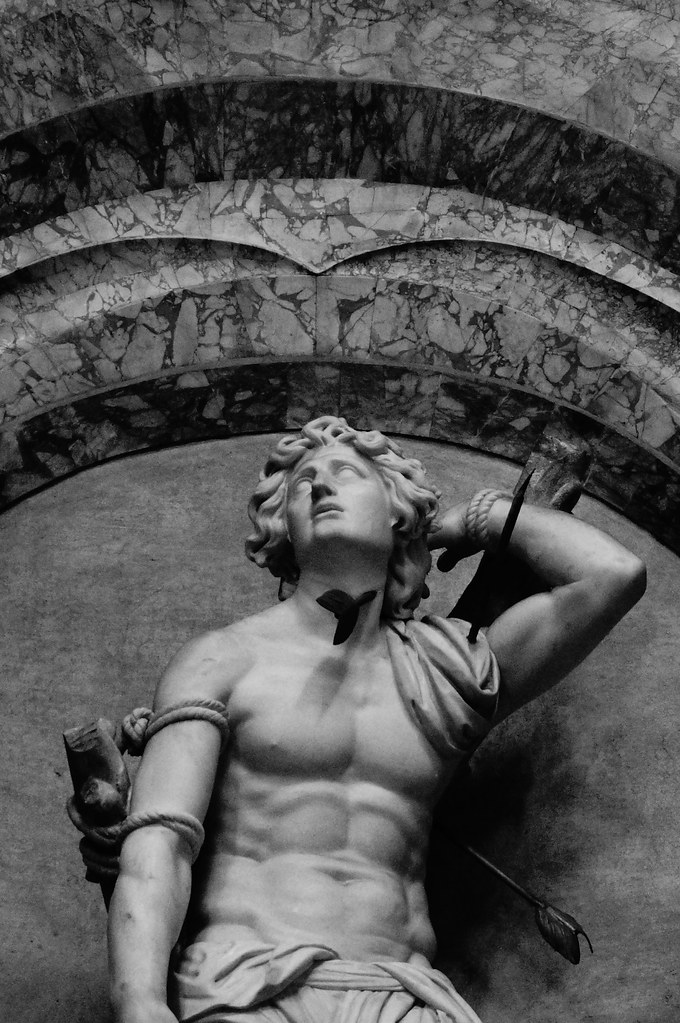
Just north of Bernini's Four Rivers fountain, you can find a delicious gelato shop and the fountain of Neptune in the plaza. I really liked this fountain and the way that Neptune stood in the water in front of the buildings surrounding the piazza. I took a break from the hot sun and bought a gelato, eating it and relaxing along the edge of this fountain before continuing on.
I now crossed the Tiber River and made it to the Castel Sant'Angelo. The castle was originally built by Hadrian to be a mausoleum for himself but then was later used as a fortress by the popes. It is now a museum (that was also closed for the holiday). I walked around the front facing the river and then through the park along Lungotevere Castello, making my way north.
I continued along until I reached the Piazza dei Tribunali/Piazza Giustizia and the Corte di Cassazione, the highest court of appeal in Italy (sort of like the U.S. Supreme Court). It is such a huge building and it would have been so cool to be able to go inside. Instead, I took advantage of the fact that I was the only one on this grand building's steps and had an "international lawyer nerd moment" chilling on the steps of the Italian Supreme Court by a statue of the great lawyer, politician, and orator Cicero.
From the Supreme Court, I finally walked back to a Ciao Roma bus stop by Castel Sant'Angelo and rode the bus back through the city until I got close to the Spanish Steps. I thought it might be cool to see the boat-shaped fountain there and eat by the steps but once I arrived, I found out that the fountain was closed and completely blocked off for repairs and the steps were covered by people. I walked to the top to enjoy the view of the city and write a bit in my journal. Then, due to the sheer numbers of people packed on the steps and the lack of restaurants in the immediate area, I decided to make an alternative plan for dinner that evening.
I made my way back down the steps and walked over back toward Fontana del Tritone and from there, to Fontana di Trevi. I stopped at a restaurant just around the corner from Trevi called Sora Lucia (map). It is just far away enough to avoid the crowds, but close enough to people watch and listen to the rushing waters of the fountain. I had some delicious gnocchi al pomodoro and tiramisu here before making my way back to Tritone to take the bus back to Termini and my hostel for the night.
Once I got back to the hostel, I had one more thing to do for the day: reserve my ticket for the Vatican Museums. I quickly took care of this and printed out my voucher to be all set to go for Saturday morning. I also met two other people staying in my room who were also travelling alone - a girl from Brazil who was working as an au pair in Antwerp and a girl from Thailand on her way back from a business trip in Europe. Since both had just arrived to the hostel and were hungry, we went across the street to a restaurant called La Famiglia (map) for them to get something to eat.
I thought that since the Vatican Museums were nearby, that I would give them a try. However, the line for this too was insanely long - it stretched around for about three blocks before even getting to the entrance (on Saturday morning, right before my flight, I would finally make it inside the Vatican Museums and Sistine Chapel). Once I saw that the line was so long, I decided to leave the Vatican area altogether and do something different. First stop: gelato.
After the gelato break, I decided that I would just hop back onto the Ciao Roma bus and ride around the entire city at least once to see it and get my bearings for when I'll walk around for the next couple days. Since many people exit at the Vatican City and Colosseum stops, I thought I was in a good location to hop back on and get a good seat on the upper deck. I was right, and managed to find a good place. I listened to some of the new audio and got off the bus once we arrived at Termini. I was pretty tired from the early morning start, so I went back to the hostel, officially checked in, then took about an hour nap.
That afternoon, I got back on the bus and rode to Fontana del Tritone, a fountain by Gian Lorenzo Bernini. Bernini's fountain, located in Piazza Barberini, has four dolphins with upturned tails that support an open scallop shell where Triton sits, blowing into a conch shell. The fountain was designed by Bernini in 1643 and was his first of many fountains he made. Up until the end of the 1700s, apparently the bodies of unidentified people were laid out in front of the fountain and the town crier would call the public to come to identify and claim the bodies. Weird. Luckily, there are no dead bodies in front of the fountain any more and it can be enjoyed sans zombies. Actually, the Fontana del Tritone is my favorite fountain because of its design and how great it looks at night, although the fountains in Piazza Navona are pretty cool too.
From Fontana del Tritone, I walked down Via del Tritone to the famous Fontana di Trevi. The Fontana di Trevi has a magical quality to it, captured by Frederico Fellini in La Dolce Vita (although I don't image that it would ever be as empty or as clean as it appears in this scene).
The fountain was designed to be a celebration of Acqua Vergine, the water conveyed to Rome by an aqueduct constructed by Agrippa in 19 BC. The fountain itself has been remodeled and replaced throughout the centuries. The fountain is so large that it seems to fill the entire plaza/piazza and you can hear the thundering of the water from about a block or so away, despite the crowds of people.
Here at Fontana di Trevi, legend has it that if you stand with your back to the fountain and throw a coin over your shoulder into the water, you will return to Rome someday. Apparently, the city gets some good use out of this tradition.
Apparently, there are so many tourists that visit the Trevi fountain that a charity for the poor and needy in Rome called Caritas began collecting the coins from the fountain each day. The daily amount is about 3,000 Euros (or about $4,109 USD). Recently, Caritas opened a supermarket to distribute essential items at free or low costs for those in need.
After making a wish and throwing my coin into the fountain like so many others before, I wandered around the streets nearby the piazza and grabbed a caprese sandwich and bottle of water to go. I walked back to the fountain and found a place to sit along the fountain's left side where I could watch the crowds of people in the plaza as well as appreciate the fountain's beauty and rushing water from up close. Sitting on a high part of the fountain, I ate my dinner and watched the sun set and the lights slowly turn on, one by one, to illuminate the little piazza and make the fountain come to life.
Making my way back to Fontana del Tritone, I realized that I had waited until after the bus' last time to take me to the Termini stop. I had the hostel's business card with me and there were tons of taxis around the piazza, so I was in no rush. I crossed the busy streets back to the piazza to admire Tritone at night before catching a cab back to the hostel.
Thursday, May 1st, 2014: Day Two in Rome
Since I had been up so early the day before, I decided that I could afford to sleep in a bit today. The weather forecast predicted a beautiful day, so I decided I would try to go to the Colosseum. Unfortunately, I did not realize that May 1st was a national holiday in Italy, so everything was closed. The only tourist attractions that were open were those that were outside (like the fountains and piazzas) and things associated with churches.
I still decided to walk around the Colosseum and take some great pictures of it and the Palatino today to take advantage of the beautiful weather. I continued walking along Via di San Gregorio until I arrived at Circo Massimo (Circus Maximus, in English/Latin), the old chariot racing grounds of the emperors.
Apparently, this is what it looked like in its glory years, after being built around 530 BCE. It must have been pretty incredible to see something like this constructed and then to be there in the stands watching the thundering chariots fly by (or better yet, in the chariot itself!).
There are not a whole lot of ruins left of Circo Massimo and today, the racing grounds now serve as a public park. I decided to take a break and enjoy the sun, so I walked to the center of the old racing grounds and laid down in the grass.
After lounging in the early afternoon sun on the grounds of Circo Massimo, I headed over to the Sant'Maria in Cosmedin church, famous for the Bocca della Verita, the Mouth of Truth. Legend has it that if you place your hand in the mouth while telling a lie, your hand would be bitten off. You can see Gregory Peck playing the old prank on Audrey Hepburn in Roman Holiday.
The old theatre, Teatro Marcello, is just up the road. The theatre's architecture with its arches served as an inspiration for the design of the Flavian Amphitheatre (better known as the Colosseum) when it was built some years later.
My next stop was the Campidoglio, and the church next to it, designed by Michelangelo when he was only 25 years old. The church was gorgeous, especially with its beautiful chandeliers. The Campidoglio was also pretty cool. You climb up several stairs to reach the plaza at the top, with a huge statue of Marcus Aurelius riding a horse. Castor and Pollux (twins and brothers to Helen of Troy), each hold a horse and wait at the top of the stairs to the Campidoglio. From behind the government buildings (with a fountain of the River God Tiber in the front), you can see a statue of Romulus and Remus with the wolf, as well as a great view of the Palatino and Foro Romano.
Right next to the Campidoglio, there is a huge white marble building, the Monumento Vittorio Emanuele II. Vittorio Emanuele II became king of Italy in 1878 and was the first king of a united Italy since the 6th century. He is pretty famous in Italy and there are streets named after him in many Italian cities. The front of the white marble building has a monument for the Tomb of the Unknown Soldier, guarded around the clock by Italian soldiers. Just like at Arlington National Cemetery, this Tomb of the Unknown Soldier has a changing of the guard that occurs periodically. I did not film it, but YouTube exists, so this is pretty much what the changing of the guards looked like.
After watching the ceremony and visiting the monument, I walked over to Ristorante Il Miraggio (map), a restaurant nearby for a quick pizza lunch (pizza all'ananas).
I then began to make my way over to the Pantheon. Unfortunately, the Pantheon was also closed for the May 1st holiday and the piazza was, like everything else in Rome I was soon discovering, insanely packed with more people in one place than I've ever seen before.
As I moved from the Pantheon to Piazza Navona, I stumbled across the church of San Ignacio (San Ignazio in Italian, Saint Ignatius in English). Apparently, San Ignacio was a Basque knight and thus is one of the patron saints for the Basque people in Pais Basco in Spain. The church is incredible though. The architecture inside is actually quite simple and the ceiling is a simple, smooth arched roof. It is the awe-inspiring frescos that make the church come to life. Painted by a lay Jesuit brother, Andrea Pozzo, in the last decades of the 1600s, the frescos are so stunning that you'll never want to look back down. It seems as though the figures are in three dimensions and that the angels are falling from the ceiling down toward you. There is no picture that I could possibly take that can capture how absolutely stunning this place is, but with the beauty of its art and the fact that there were not a whole of of people inside, since it's not a major or well-known tourist destination, it is definitely one of my favorite places in Rome.
After spending a long time admiring the beauty of this hidden gem, I continued along the way until I reached Piazza Navona. The fountain in the center of Piazza Navona is also by Bernini and is called Fontana dei Quattro Fiumi, or The Fountain of Four Rivers. The statues alongside the central column represent the Danube, Ganges, Rio de la Plata, and the Nile rivers.
According to popular tales, the poses of the statues for the Nile and Rio de la Plata are also that of the statue of Saint Agnes in the church directly behind the fountain. This is said to be because of the rivalry between Bernini and Borromini. Apparently, Rio de la Plata's hand is raised to ward off the collapse of the church's facade while the Nile has its face covered in its refusal to look at Borromini's work (as opposed to the fact that the source of the Nile at this point was not yet known in Europe).

In this same vein, Saint Agnes' statue is touching her chest in a gesture by Borromini to assure the people of Rome that the church would not collapse.
The story of Saint Agnes itself though is actually pretty interesting and definitely gives you a different impression when entering the church. I ended up picking up a brochure from the church that explains it in detail.
There is little known about the life of St. Agnes, but the scarce information we have is enough to throw light on a figure who has been dear to the hear of the faithful through the centuries.
We know nothing about her family, or why this young girl became a Christian. What is certain is that her name was Agnes (in Greek: pure, chaste) and that when she died, she was 12 or 13 years olf, according to the examination of her skull which is preserved in the reliquary in the Chapel of the Holy Head, in the Church of Sant'Agnese in Agone at Piazza Navona.
She was martyred under the Emperor Siocletian who unleashed a ferocious persecution of the Christian community around the years 303-304 AD.
The responsibility for her martyrdom is attributed to the son of the Prefect of Rome who became infatuated with her. When she rejected his advances - she had made a vow of chastity to mark her total consecration to God - she was put on display under the arches of the Circus Agonale, the present day Piazza Navona, where the prostitutes of the time paraded.
Tradition says that her nakedness was covered by flowing locks of hair which grew miraculously to protect her. A man who intended to buy her favors died before he could touch her. When the prefect questioned her about this mysterious death, Agnes replied that an angel dressed in white protected her and, to prove the truth of her statement, she brought the unfortunate man back to life with a prayer.
She was next thrown onto the fire, but once again prayer came to her aid, extinguishing the flames.
In the cad, like a lamb taken to slaughter, her throat was pierced with a sword. This is why the image of St. Agnes always shows her with a lamb at her feet or in her arms.
Constance, the daughter of Emperor Constantine, erected a basilica in her honor on the Via Nomentana, where to these days, the nuns raise two lambs each year which are offered to the Pope. Their wool is used to weave the pallium which the Pope, in turn, gives the archbishops.
Throughout the centuries the name of St. Agnes has been commemorated in Roman Catholic liturgy and her cult has always occupied an important place in the life of the Church.
The Basilica of Saint Agnes in Agone is a magnificent evidence of the consideration in which this saint has been held by the Popes and by the many illustrious artists who have conferred so much splendor on her in their works.
St. Agnes is the patron saint of young women and of gardeners. St. Agnes' saint's day is on the 21st of January, the date of her martyrdom.

The church of St. Agnes also has a chapel dedicated to Saint Sebastian, another famous Catholic saint and early martyr who was also killed in Diocletian's persecution of the early Christians. His saint's day is on January 20th, and he is a patron saint for soldiers and athletes.
I now crossed the Tiber River and made it to the Castel Sant'Angelo. The castle was originally built by Hadrian to be a mausoleum for himself but then was later used as a fortress by the popes. It is now a museum (that was also closed for the holiday). I walked around the front facing the river and then through the park along Lungotevere Castello, making my way north.
I continued along until I reached the Piazza dei Tribunali/Piazza Giustizia and the Corte di Cassazione, the highest court of appeal in Italy (sort of like the U.S. Supreme Court). It is such a huge building and it would have been so cool to be able to go inside. Instead, I took advantage of the fact that I was the only one on this grand building's steps and had an "international lawyer nerd moment" chilling on the steps of the Italian Supreme Court by a statue of the great lawyer, politician, and orator Cicero.
From the Supreme Court, I finally walked back to a Ciao Roma bus stop by Castel Sant'Angelo and rode the bus back through the city until I got close to the Spanish Steps. I thought it might be cool to see the boat-shaped fountain there and eat by the steps but once I arrived, I found out that the fountain was closed and completely blocked off for repairs and the steps were covered by people. I walked to the top to enjoy the view of the city and write a bit in my journal. Then, due to the sheer numbers of people packed on the steps and the lack of restaurants in the immediate area, I decided to make an alternative plan for dinner that evening.
I made my way back down the steps and walked over back toward Fontana del Tritone and from there, to Fontana di Trevi. I stopped at a restaurant just around the corner from Trevi called Sora Lucia (map). It is just far away enough to avoid the crowds, but close enough to people watch and listen to the rushing waters of the fountain. I had some delicious gnocchi al pomodoro and tiramisu here before making my way back to Tritone to take the bus back to Termini and my hostel for the night.
Once I got back to the hostel, I had one more thing to do for the day: reserve my ticket for the Vatican Museums. I quickly took care of this and printed out my voucher to be all set to go for Saturday morning. I also met two other people staying in my room who were also travelling alone - a girl from Brazil who was working as an au pair in Antwerp and a girl from Thailand on her way back from a business trip in Europe. Since both had just arrived to the hostel and were hungry, we went across the street to a restaurant called La Famiglia (map) for them to get something to eat.
Tomorrow inside the Colosseum and Foro Romano should be another great day!
 |
| Onward! |



 11:30 PM
11:30 PM
 J-Mad
J-Mad


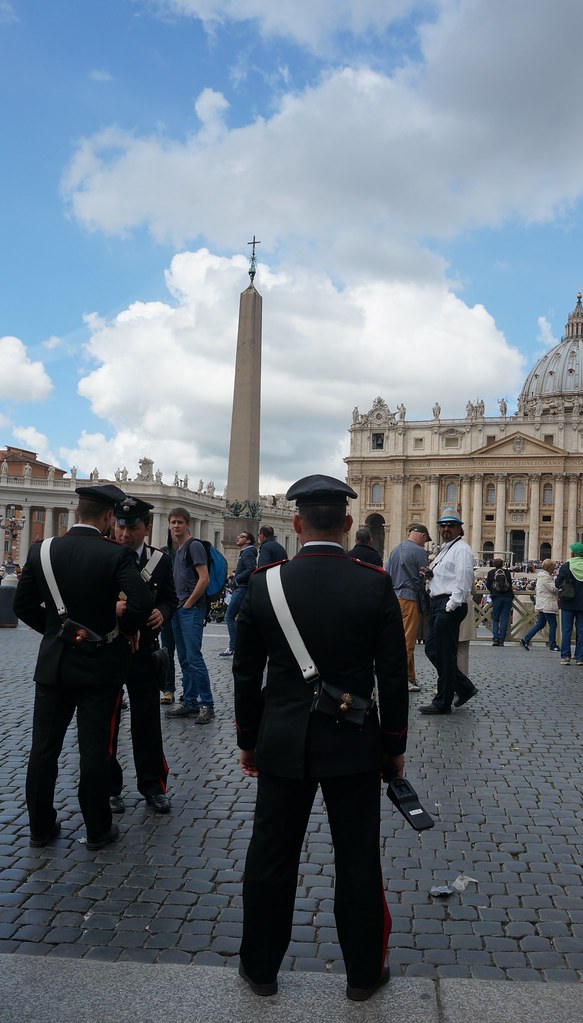
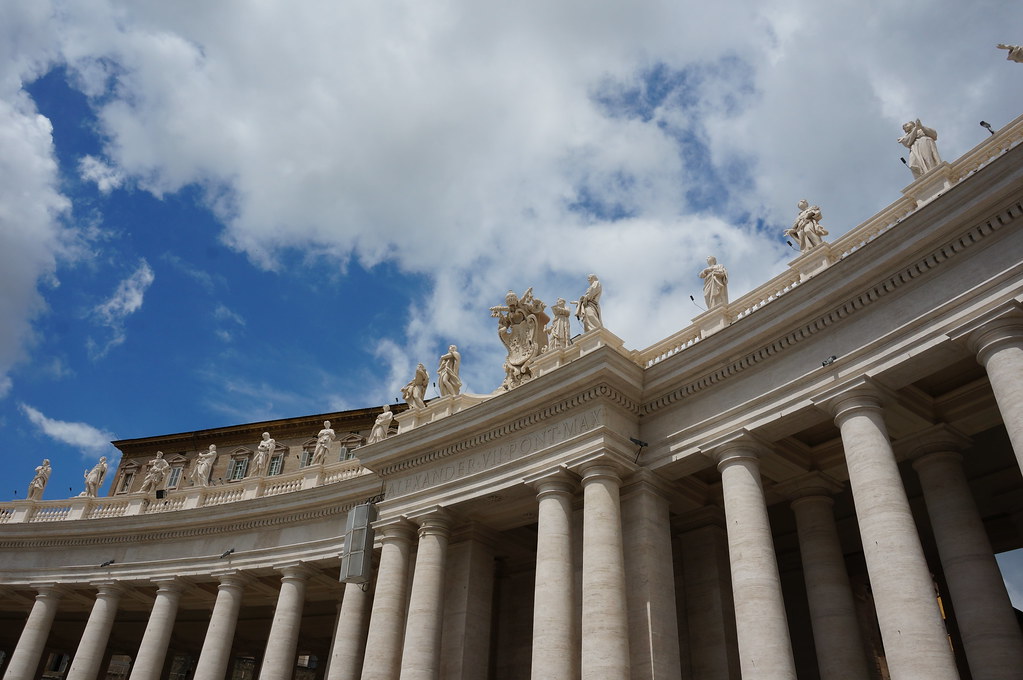


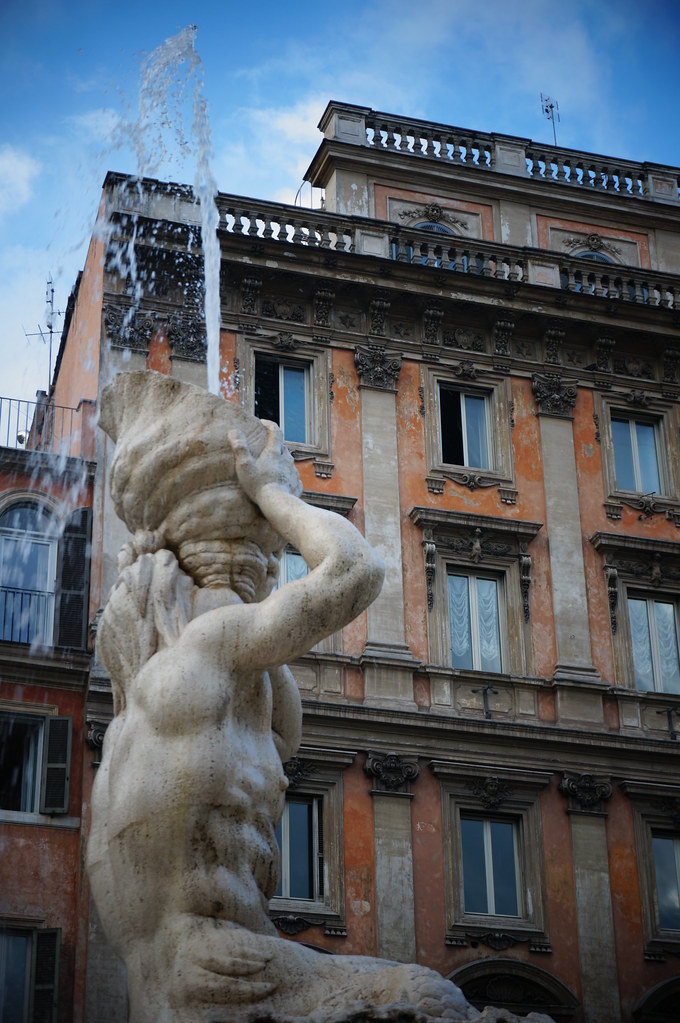
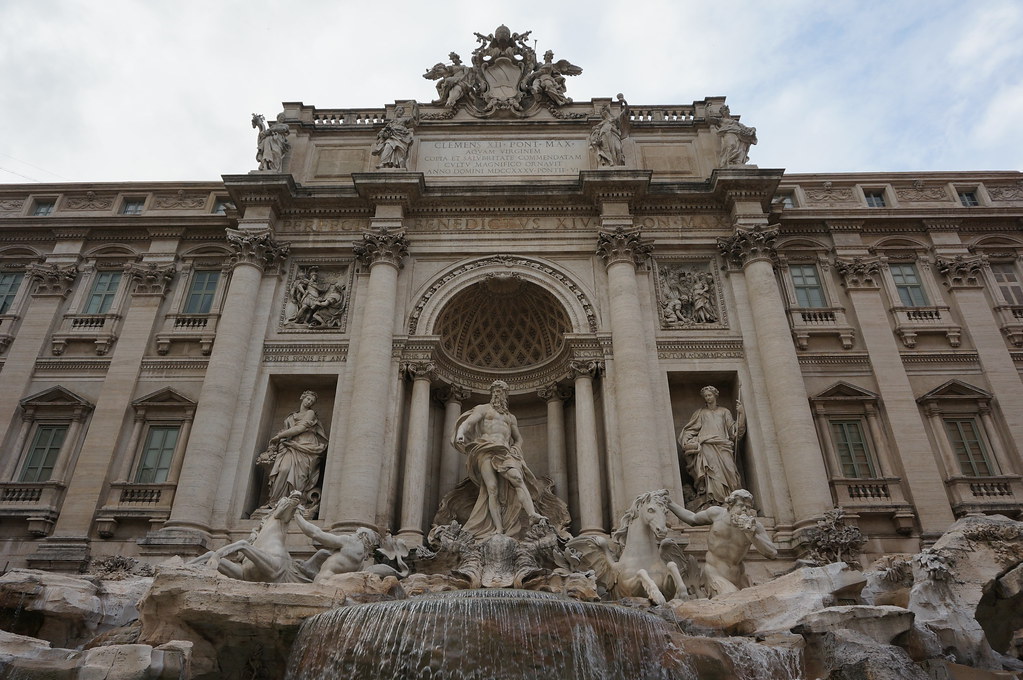
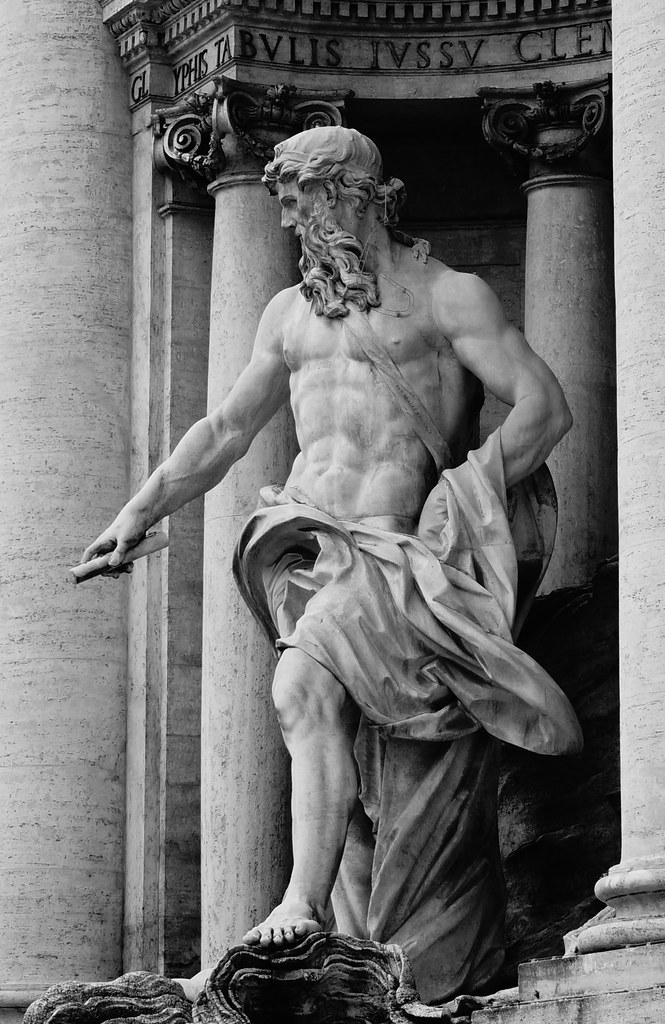

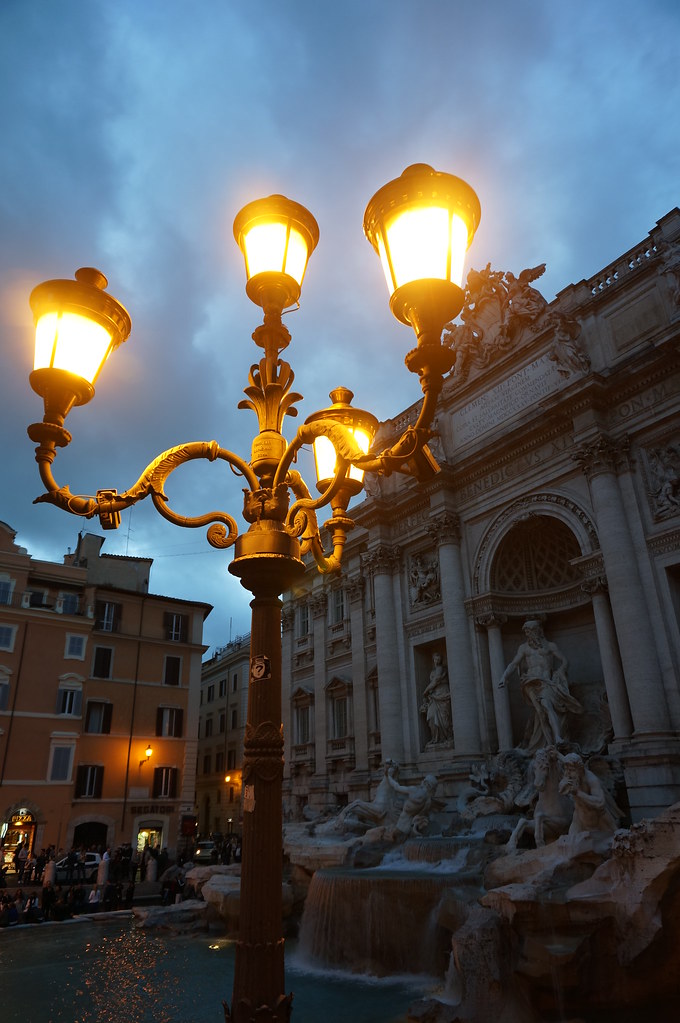
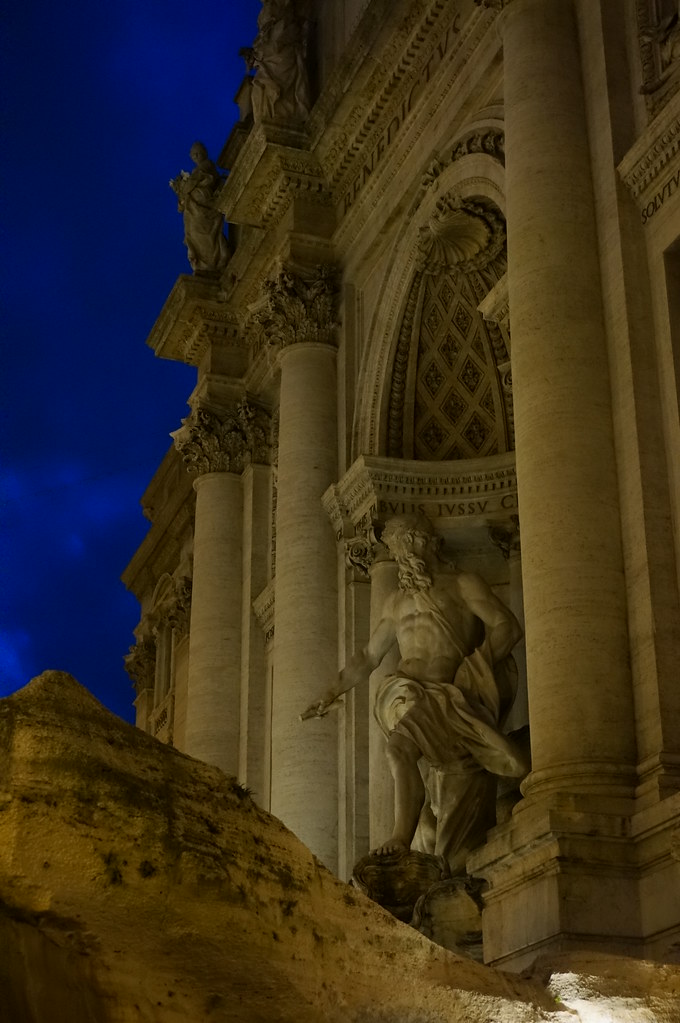

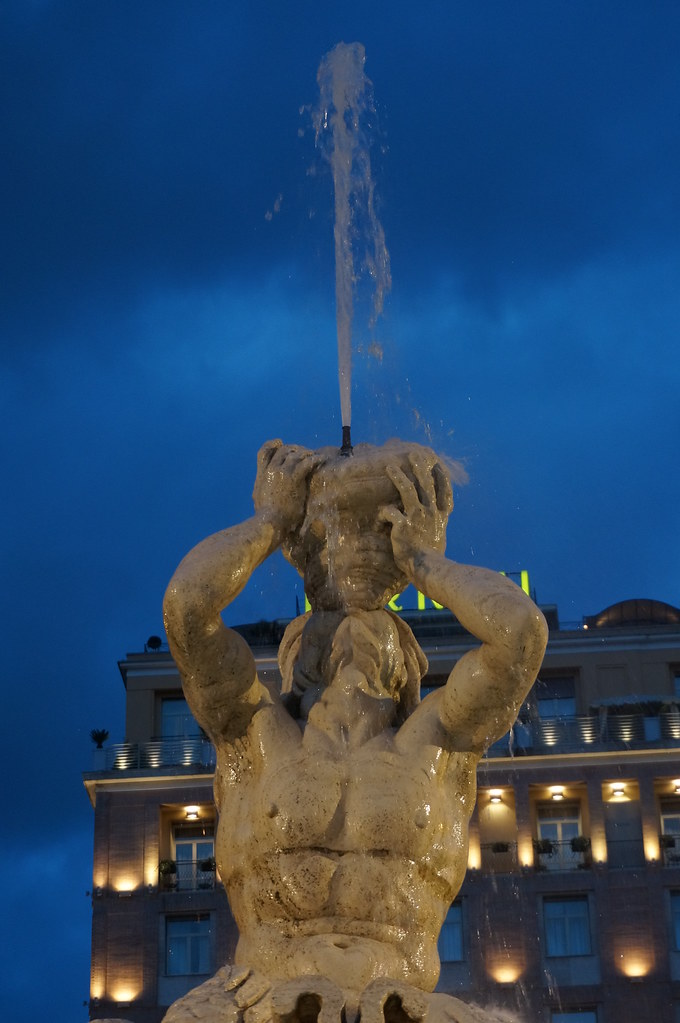


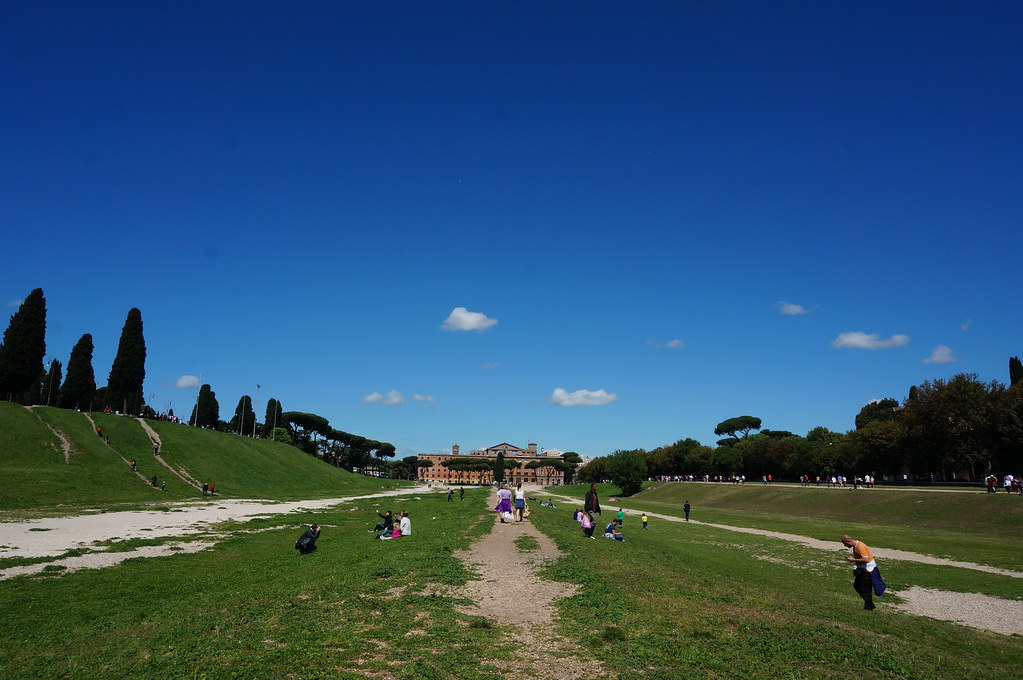
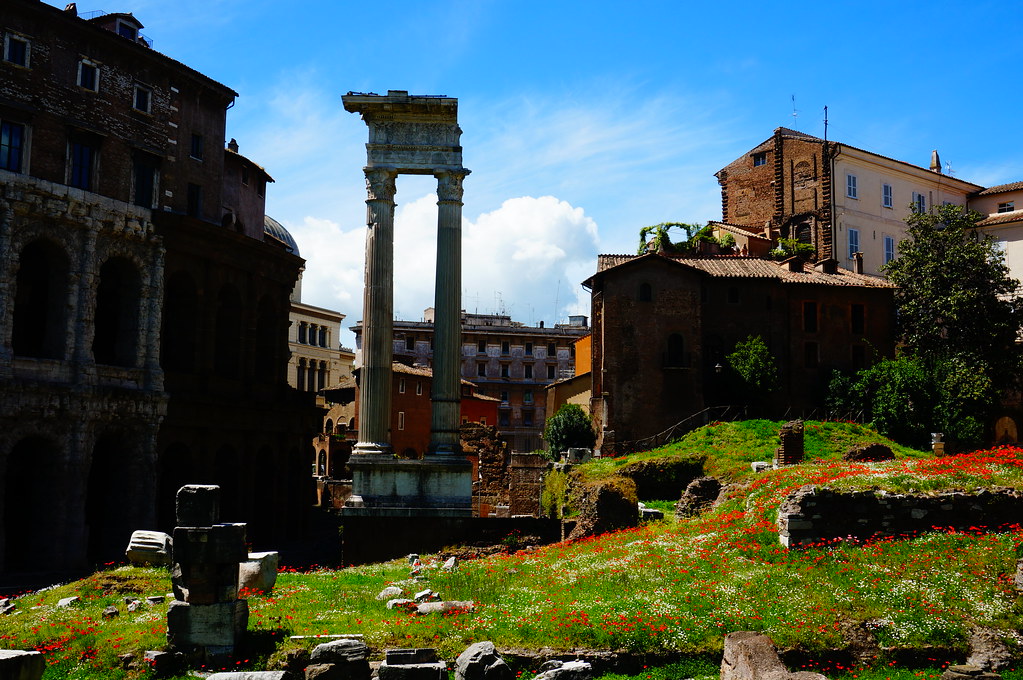
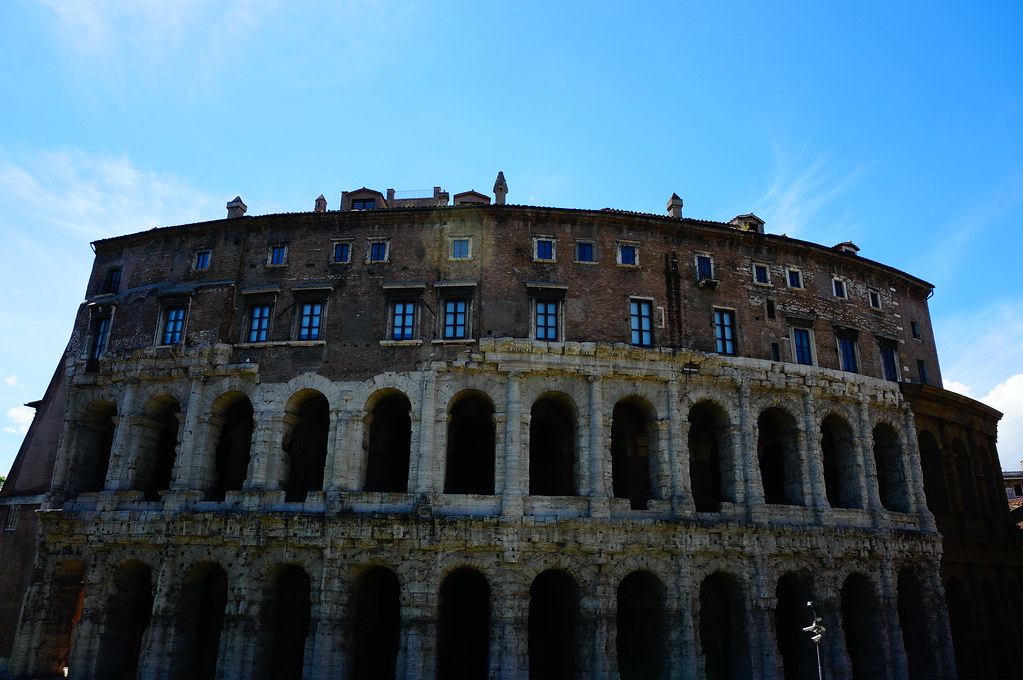


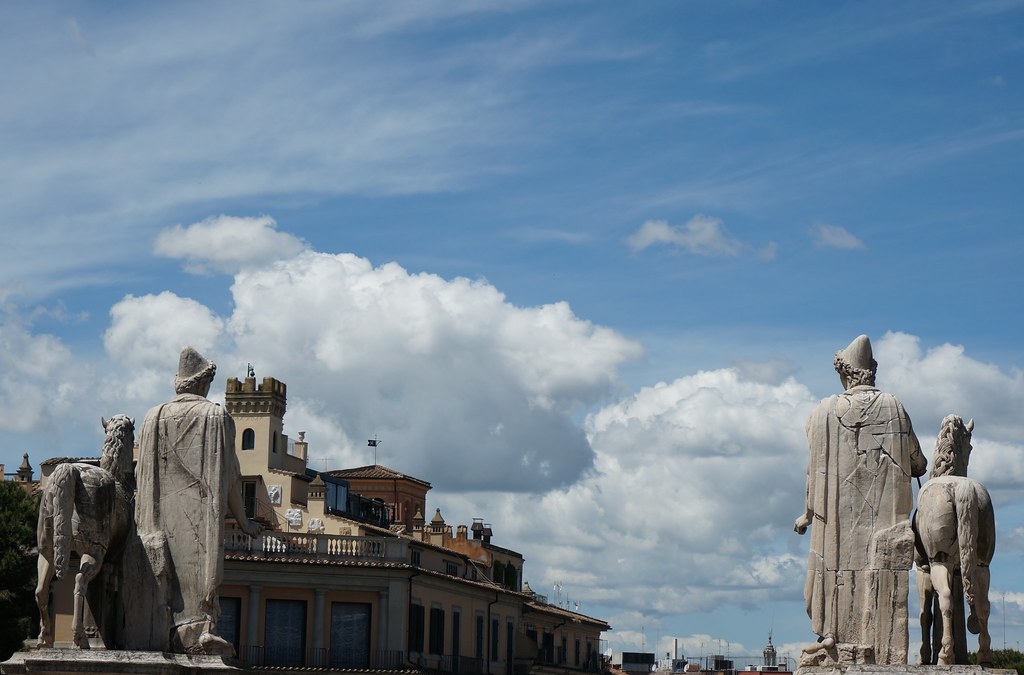
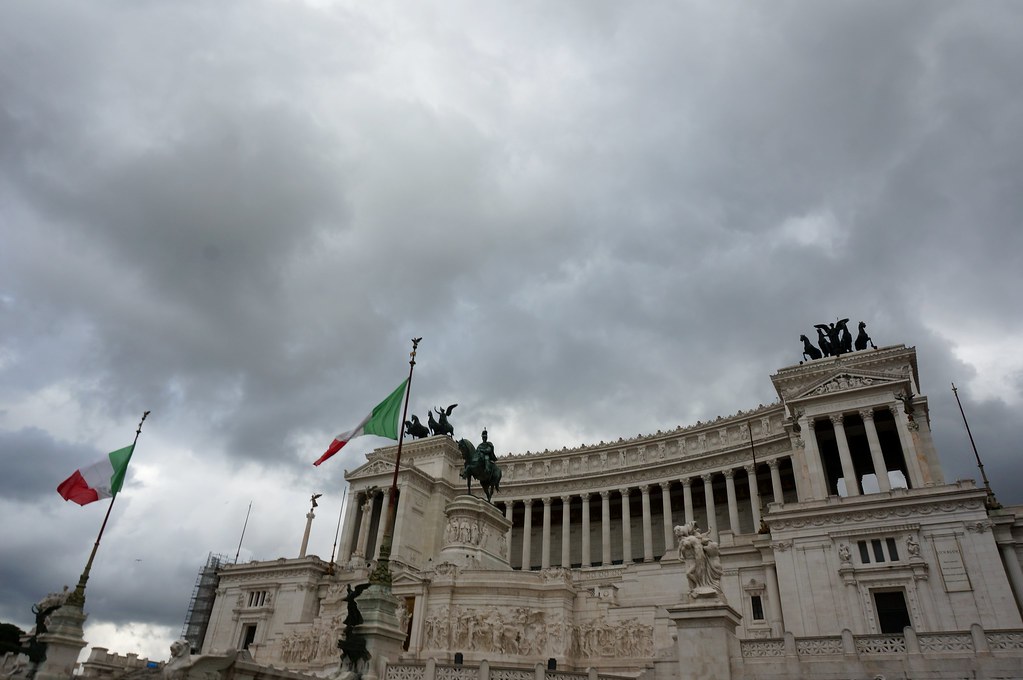
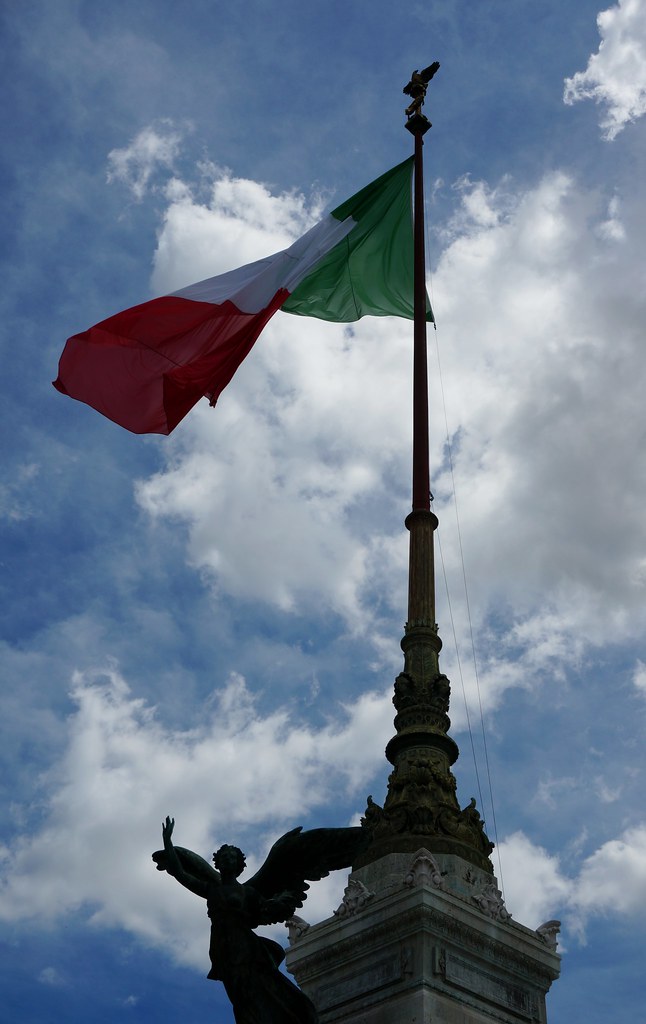

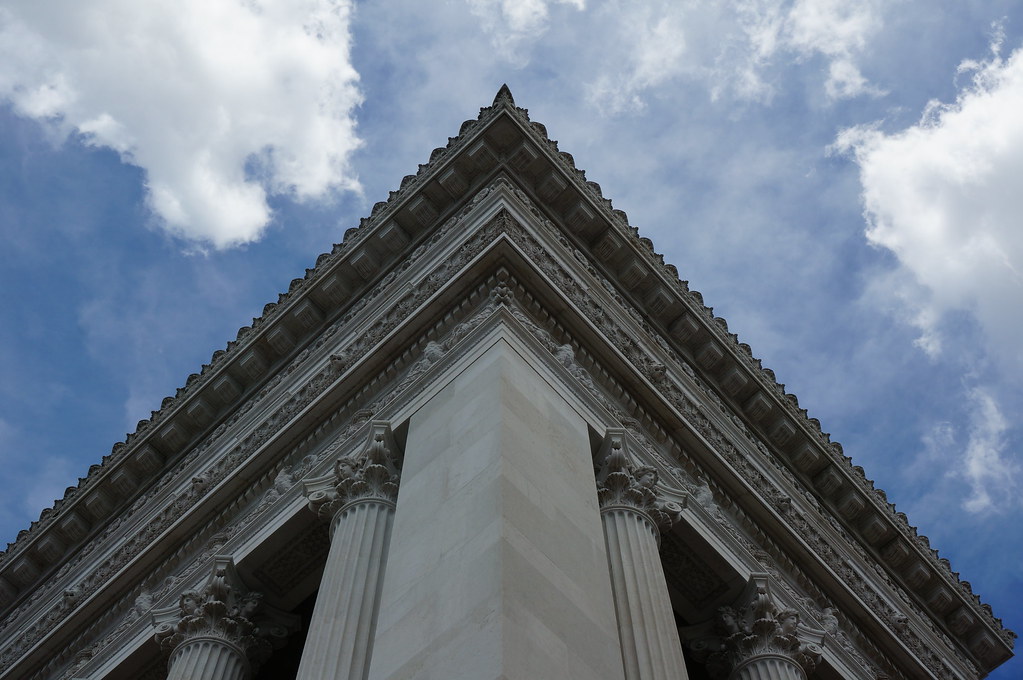



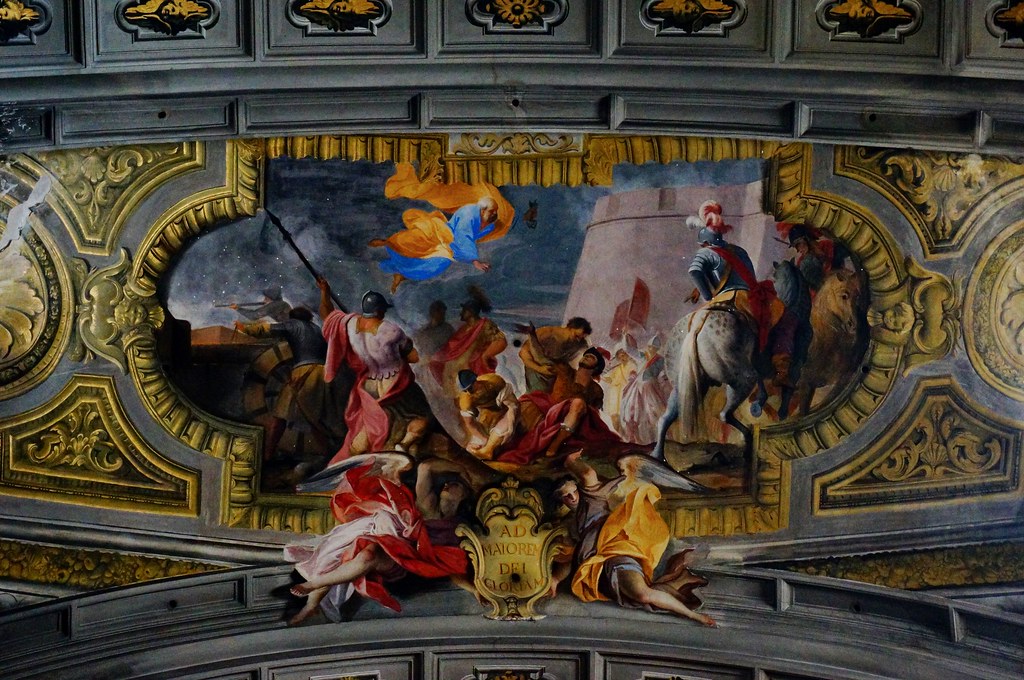





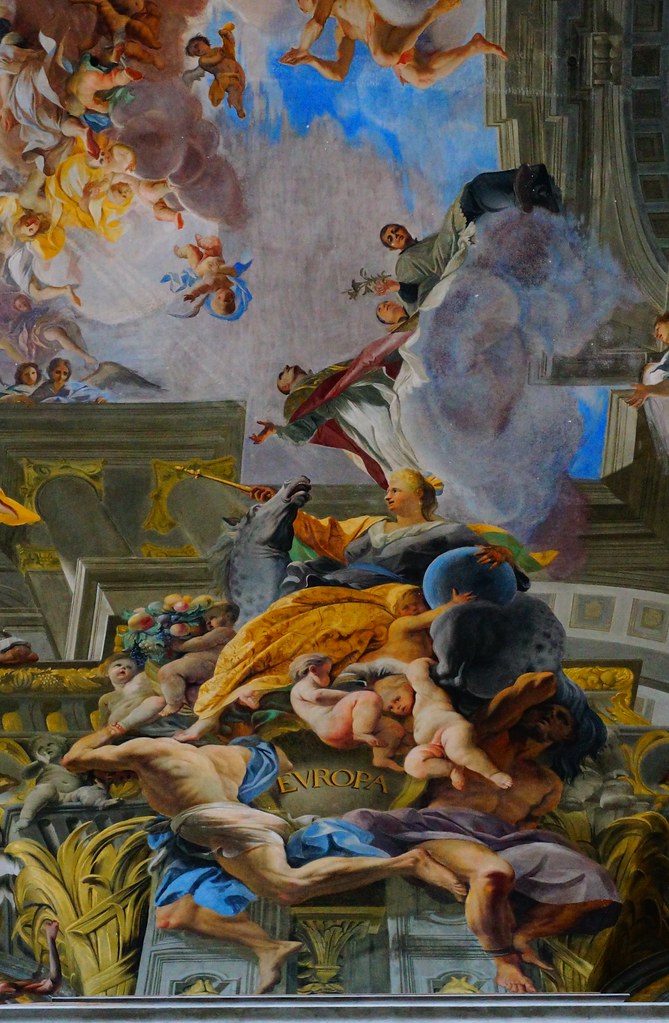
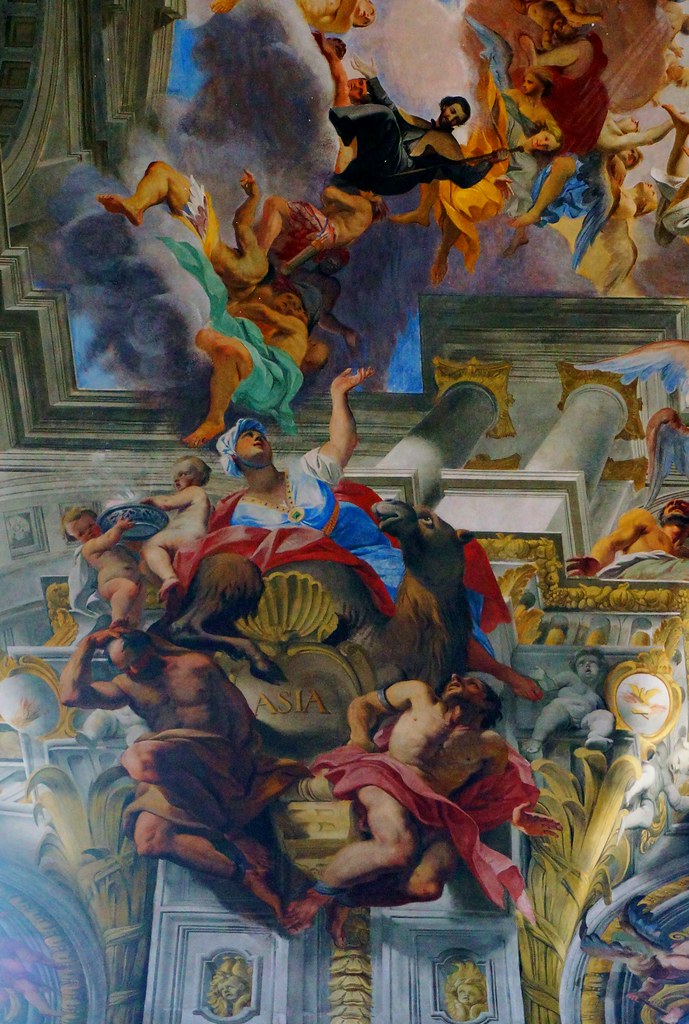

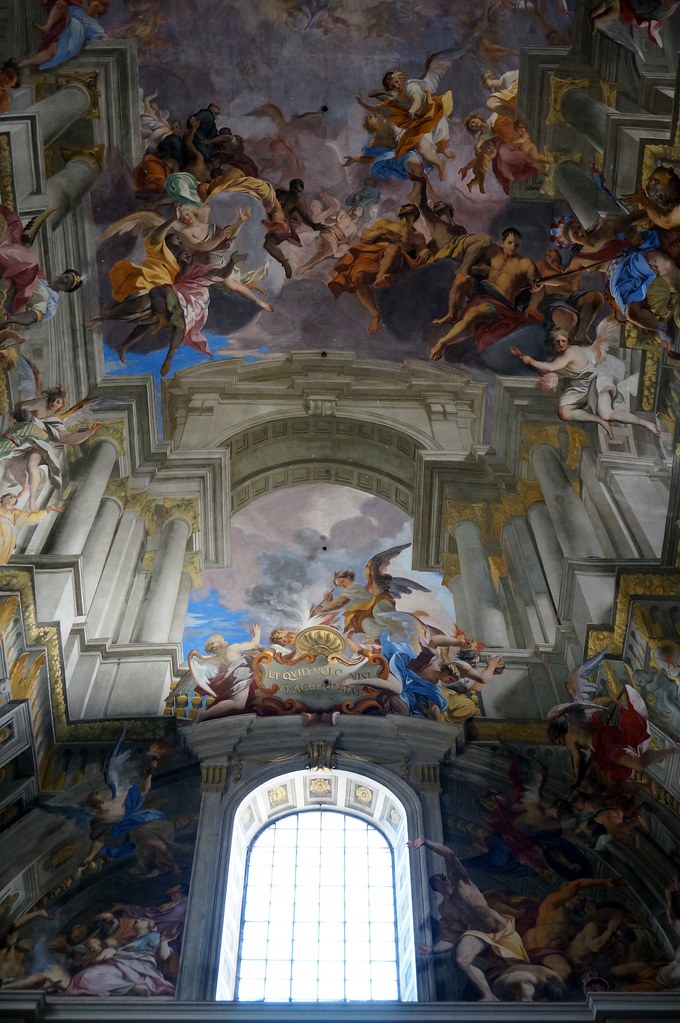
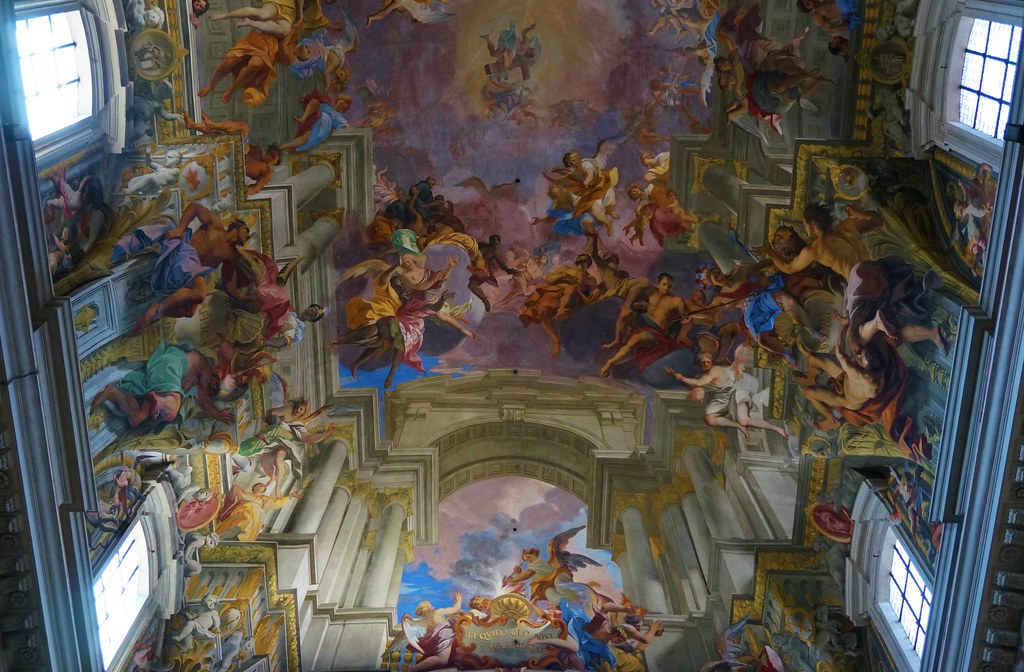

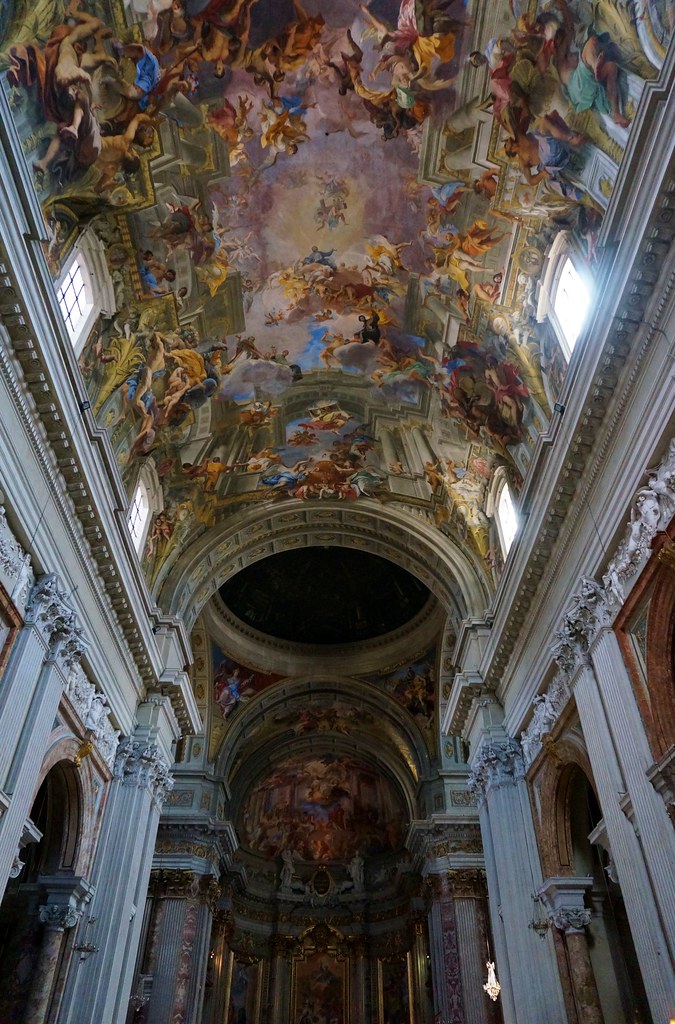

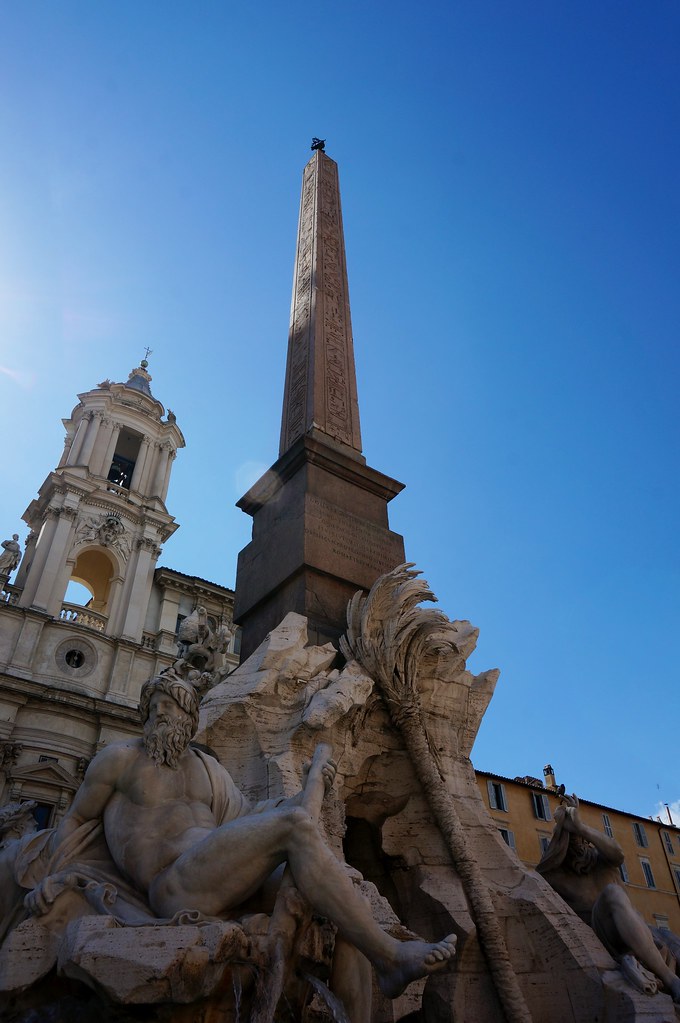

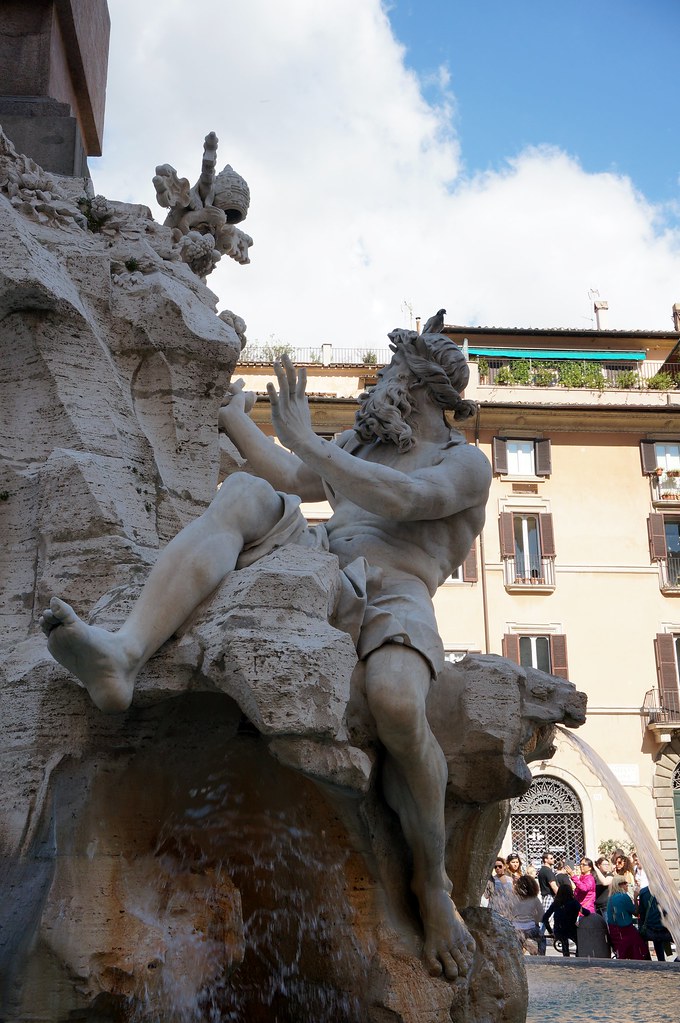

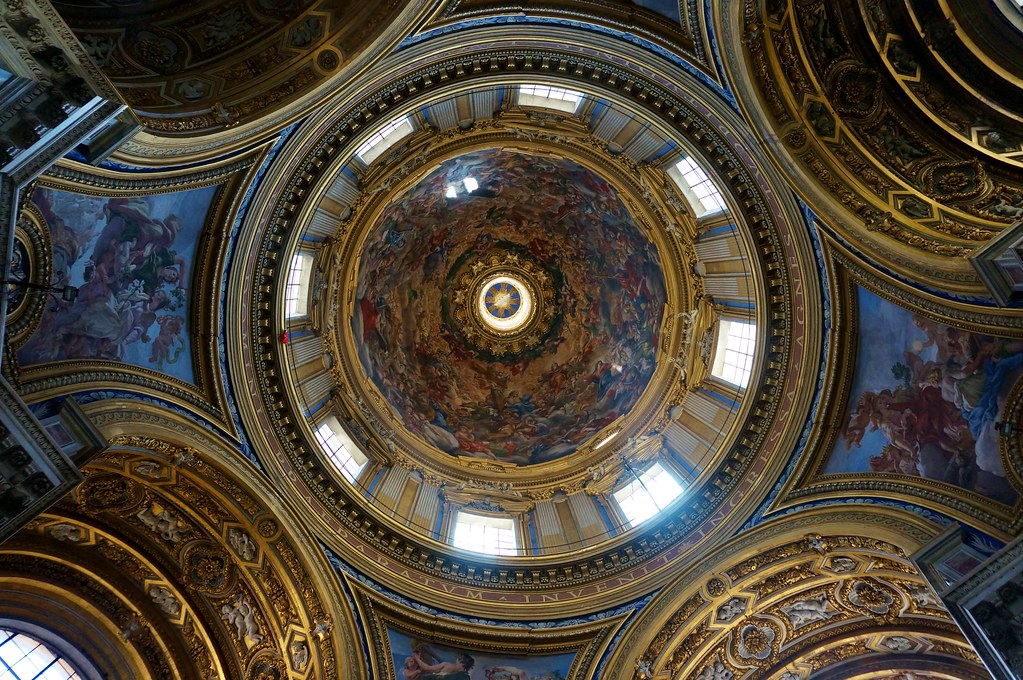
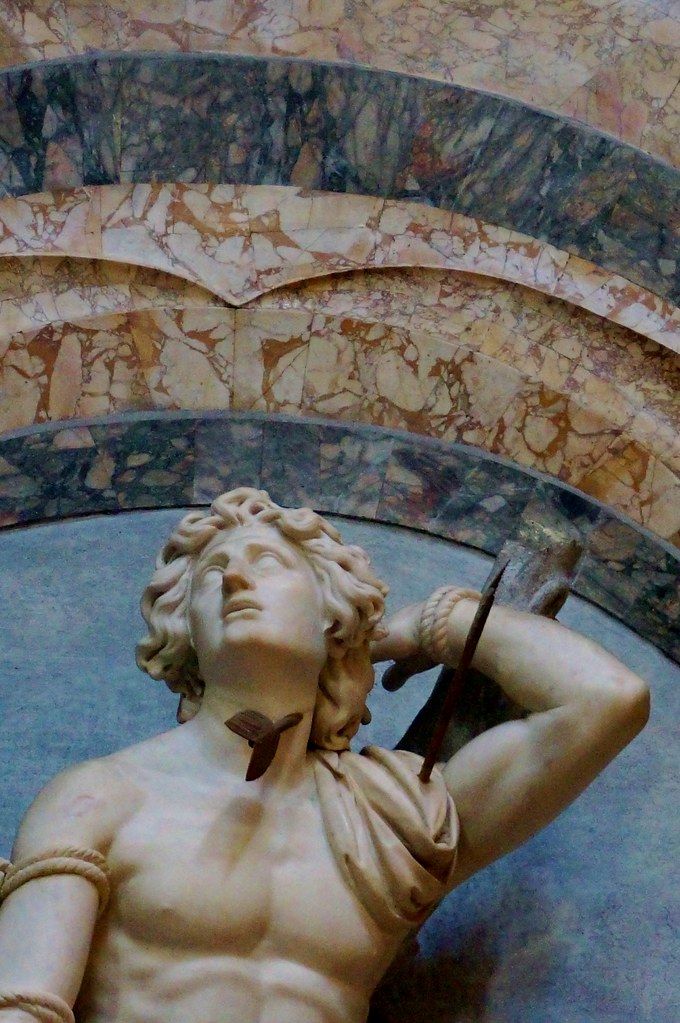
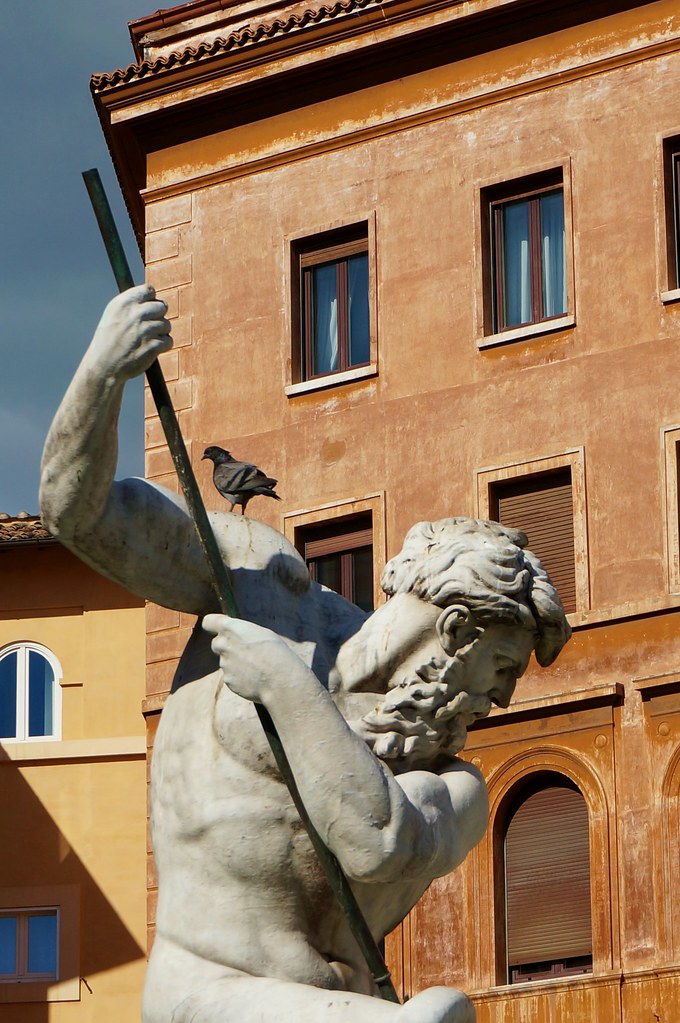
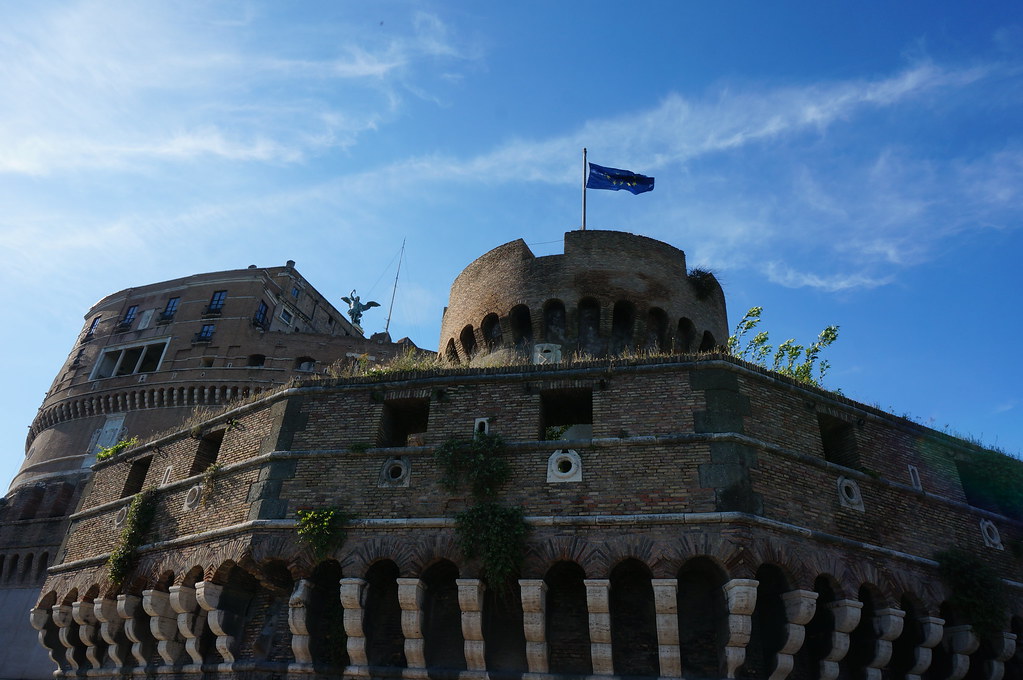


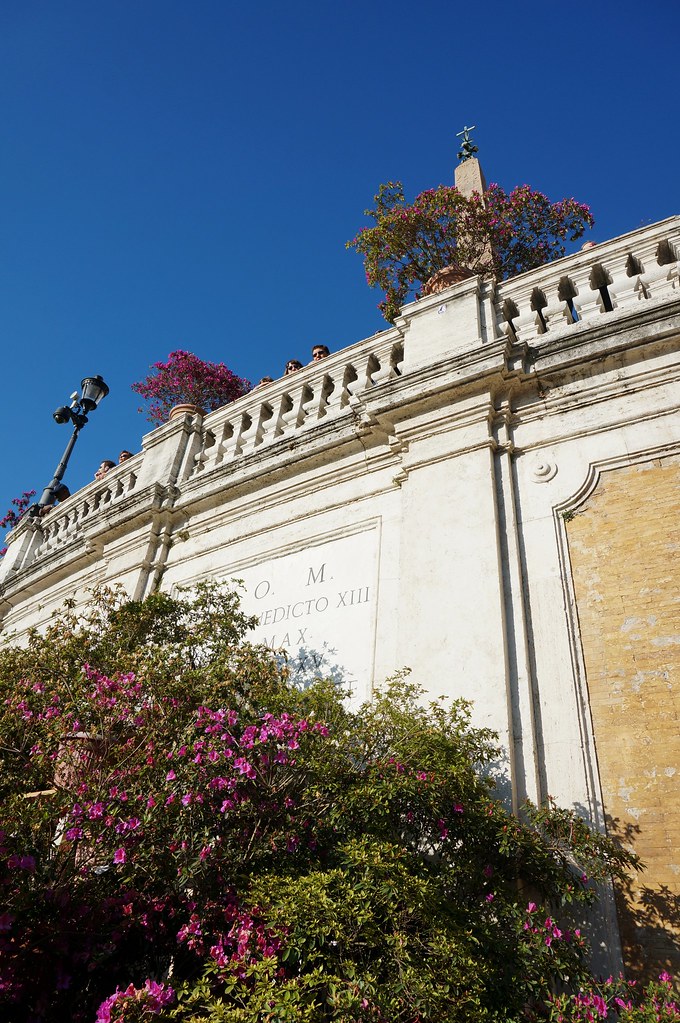




 Posted in:
Posted in: 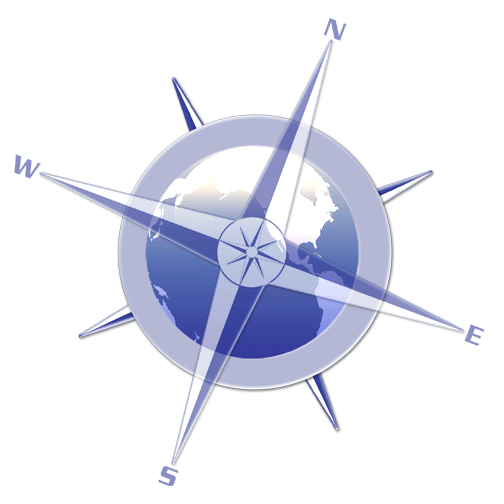

0 comments:
Post a Comment